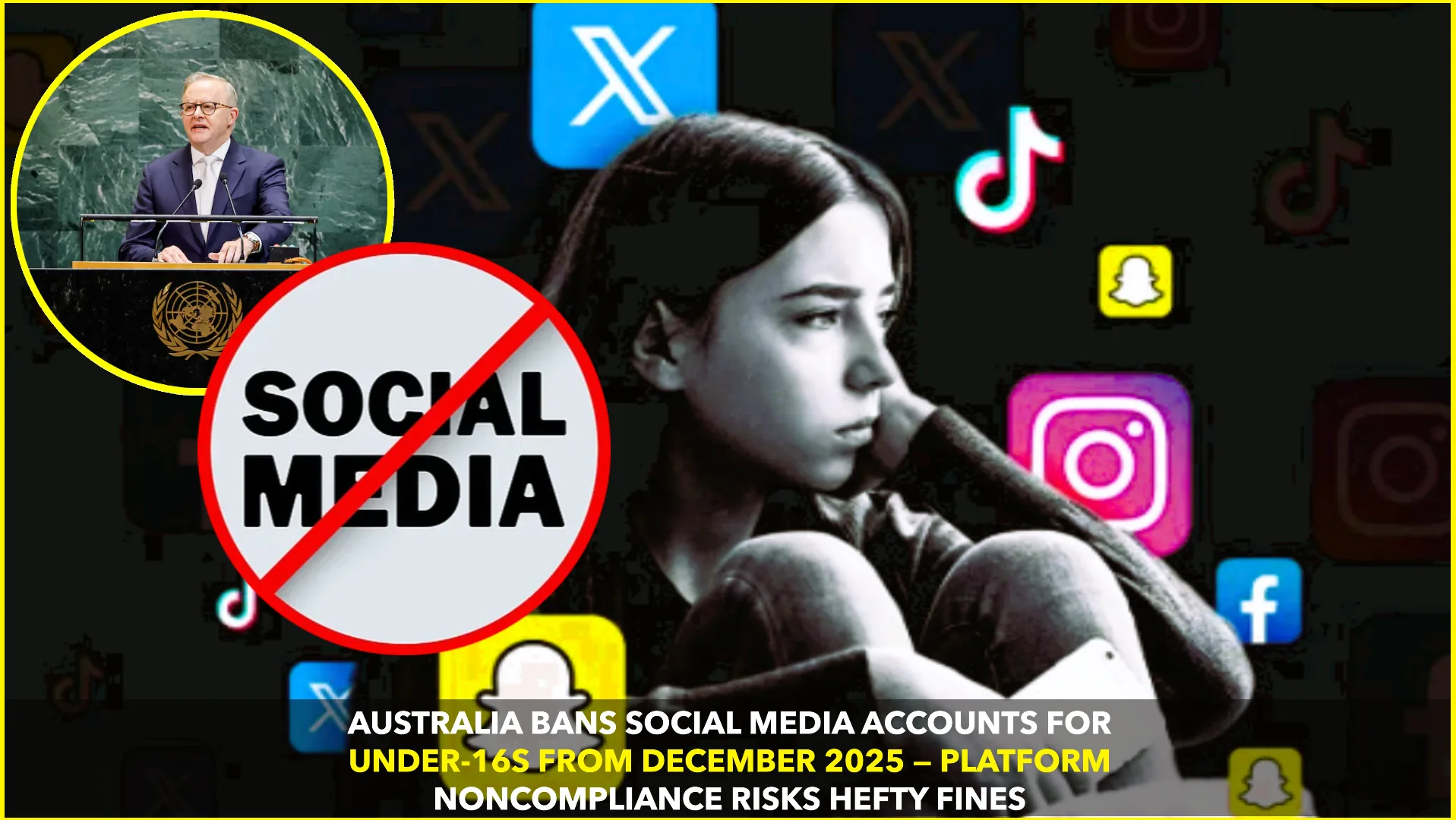Australia has introduced a new law that will ban children under 16 from holding social media accounts starting December 2025. The move aims to protect young people from harmful online content and exploitation, but it has also triggered fierce debate about feasibility, privacy, and government overreach.
The legislation, known as the Online Safety Amendment (Social Media Minimum Age) Act 2024, was passed in Parliament late last year. It gives companies one year to prepare before the ban comes into force. Under the new law, major platforms including Facebook, Instagram, TikTok, YouTube, Snapchat, and X must ensure that under-16s cannot create or maintain accounts (Reuters).
Failure to comply could cost platforms up to AUD 49.5 million per breach, making it one of the world’s toughest youth-focused social media laws. The eSafety Commissioner will oversee compliance and issue guidelines for implementation (ABC News Australia).
Why the Ban?
The government argues that young people need a “safe digital space” free from addictive algorithms, harassment, and harmful trends. Officials point to research showing children are exposed to cyberbullying, unrealistic body image pressures, and grooming risks when engaging with social media platforms.
Communications Minister Anika Wells said the initiative will give minors “room to develop resilience and digital literacy without being pulled into dangerous online environments.” The ban reflects rising global concern over how early exposure to social media impacts mental health and development (The Guardian).
How Will It Work?
Platforms must take “reasonable steps” to prevent under-16s from signing up. This includes:
- Blocking false age declarations.
- Removing underage accounts once identified.
- Creating appeal systems for wrongful removals.
The rules do not demand universal age verification, which critics feared would lead to mass data collection. Instead, regulators expect companies to use a mix of technology, reporting systems, and moderation practices to identify under-age users (AP News).
Industry Pushback
Tech companies have raised concerns about feasibility and fairness. X (formerly Twitter) called for a delay, arguing the policy might breach free expression rights under international law. Other firms fear it will push them into intrusive data checks, which could backfire by undermining user privacy (The Australian).
Experts also warn that young users could easily sidestep the rules with shared accounts, VPNs, or fake identities, potentially driving them into less-regulated online spaces.
Global Spotlight
The ban has drawn international attention. At a recent United Nations event on child protection, Australia’s law was highlighted as a bold experiment in digital safety. Several countries are said to be monitoring its rollout closely as they weigh their own responses to youth online safety (BBC).
Supporters vs. Critics
Supporters see the policy as a pioneering step toward protecting mental health, limiting predatory behavior, and forcing tech giants to prioritize child safety. Parents’ groups have praised the government for taking a strong stance.
Critics, however, say the measure is largely symbolic and does not address the root causes of online risks, such as inadequate content moderation, algorithmic amplification of harmful material, or poor digital education. They argue resources might be better spent on teaching children safe online practices rather than enforcing bans.
Looking Ahead
As December 2025 nears, attention will shift to implementation. Can companies meet the “reasonable steps” standard without infringing on user rights? Will regulators enforce penalties aggressively? And most importantly, will the law truly protect children—or will it simply reshape how they engage with the internet?
Australia’s gamble may become a blueprint for other nations—or serve as a warning of the limits of online regulation.










